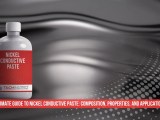
Advances in ITO Coating Techniques: Sputtering, CVD, and Sol-Gel Methods
August 19, 2025Indium Tin Oxide (ITO) is a transparent and conductive material used in touchscreens, solar cells, and displays. To create ITO coatings, scientists employ various methods, including sputtering, chemical vapor deposition (CVD), and sol-gel. Each technique has its benefits and challenges. Let’s explore how these methods work in simple terms.
Sputtering (Physical Vapor Deposition PVD)
How It Works:
A high-energy beam (usually argon gas) hits a solid ITO target, knocking off tiny particles.
These particles stick to a surface (like glass or plastic), forming a thin, uniform ITO layer.
Advantages:
High-quality, smooth coatings
Good control over thickness
Works well for large-scale production
Disadvantages:
Expensive equipment
Needs a vacuum, which increases cost
Chemical Vapor Deposition (CVD)
How It Works:
A gas containing indium and tin is heated, causing a chemical reaction.
The reaction deposits ITO as a thin film on the desired surface.
Advantages:
Works on complex shapes
Can coat uneven surfaces evenly
Disadvantages:
High temperatures are needed (can damage some materials)
Expensive and complex process
Sol-Gel Method
How It Works:
A liquid solution (containing indium and tin compounds) is spread on a surface.
The liquid dries and hardens into a solid ITO film when heated.
Advantages:
Low-cost and simple process
Works at lower temperatures
Good for small-scale production
Disadvantages:
Films may not be as conducive as other methods
Can have cracks or uneven coatings
Which Method is Best?
For high-quality displays & electronics → Sputtering
For complex-shaped coatings → CVD
For low-cost, simple applications → Sol Gel
Scientists are continually improving these methods to make ITO coatings more affordable, efficient, and environmentally friendly. New techniques, such as inkjet printing and roll-to-roll coating, are also being explored for future applications.


